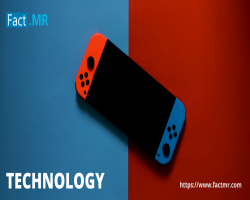The Future of Innovative Business Solutions in the Australian Healthcare Industry

The healthcare sector in Australia, like many others globally, is undergoing a profound transformation driven by technological advancements, changing patient expectations, and a focus on efficiency and sustainability. In recent years, healthcare providers have begun adopting a range of innovative business solutions to improve patient care, streamline operations, and address emerging challenges. The future of healthcare in Australia is set to be reshaped by these innovations, leading to a more patient-centric, data-driven, and efficient system.
In this article, we will explore how Australian healthcare providers are using innovative solutions to enhance patient care, improve operational efficiency, and adapt to the evolving healthcare landscape.
1. Telehealth and Digital Health Technologies
Telehealth has experienced rapid growth in Australia, particularly in response to the COVID-19 pandemic, but its continued expansion is set to play a crucial role in the future of healthcare. Digital health solutions like telemedicine platforms allow healthcare providers to deliver consultations remotely, reducing wait times, providing more accessible care for rural or underserved communities, and improving overall efficiency.
Innovations in telehealth have gone beyond simple video calls. For example, wearable devices and remote monitoring tools now allow healthcare professionals to track patient health data in real-time. This empowers patients to take more responsibility for their health, while also providing doctors with the necessary information to make informed decisions. Australian healthcare providers are now leveraging these technologies to facilitate continuous care, decrease hospital readmissions, and reduce the strain on in-person consultations.
2. Artificial Intelligence and Machine Learning
Artificial intelligence (AI) and machine learning (ML) have the potential to revolutionize healthcare in Australia, particularly in diagnostics and personalized treatment plans. AI can analyze vast amounts of medical data quickly, providing more accurate diagnoses and predicting patient outcomes with a level of precision that was once unattainable.
Healthcare providers are utilizing AI for tasks such as identifying patterns in medical imaging, detecting early signs of chronic conditions like cancer or heart disease, and improving drug development processes. In the coming years, AI will continue to play a significant role in helping healthcare professionals make more data-driven decisions, ultimately improving patient outcomes and reducing costs.
Machine learning algorithms are also being employed to analyze patient data, which can be used to create customized treatment plans and predict the likelihood of diseases developing. By adopting AI and ML technologies, Australian healthcare providers are becoming more proactive in their care approach, providing better-targeted treatments and reducing unnecessary interventions.
3. Electronic Health Records (EHRs) and Data Sharing
One of the fundamental innovations in the Australian healthcare industry is the implementation of Electronic Health Records (EHRs), which enable healthcare providers to maintain accurate and up-to-date patient records digitally. EHRs provide a comprehensive view of a patient’s health history, including diagnoses, treatment plans, medications, and allergies, all in one easily accessible format.
The digitization of health records has improved the coordination of care, enabling healthcare professionals to access patient information instantly, regardless of location. This leads to fewer errors, faster decision-making, and better overall patient care. Furthermore, the integration of EHRs across different healthcare systems allows for seamless communication between healthcare providers, enhancing the sharing of critical patient data.
As Australia continues to enhance its national eHealth systems, interoperability between healthcare organizations will improve, allowing for more effective collaboration and better patient outcomes. Data-sharing platforms will enable healthcare professionals to make informed, real-time decisions, resulting in faster and more accurate diagnoses.
4. Blockchain for Healthcare Data Security
As healthcare data becomes increasingly digital, maintaining the security and privacy of patient information has become paramount. Blockchain technology, known for its security features, is now being explored as a solution to secure healthcare data. Blockchain allows for the creation of immutable records, ensuring that patient data cannot be altered or tampered with once recorded.
Australian healthcare providers are beginning to explore blockchain’s potential for secure, decentralized data storage and sharing. This technology can also help streamline administrative processes by ensuring that only authorized personnel have access to sensitive patient information. Furthermore, blockchain technology enables healthcare organizations to maintain transparent records of transactions, improving trust between patients and providers.
With the rise of cyber threats in the healthcare sector, adopting blockchain solutions will be key in protecting patient data from breaches and maintaining the integrity of healthcare systems.
5. Robotics and Automation in Healthcare
Robotics and automation have already begun to make a significant impact in the Australian healthcare industry, especially in surgery and rehabilitation. Robotic-assisted surgery has revolutionized how surgeries are performed, allowing for more precise, minimally invasive procedures that result in faster recovery times and fewer complications.
Automation is also being leveraged in administrative tasks such as billing, scheduling, and inventory management. By automating these time-consuming processes, healthcare providers can reduce human error, increase efficiency, and allow staff to focus on patient care. With continued advancements in robotics, Australian hospitals and clinics will be able to offer more sophisticated, efficient services, while also reducing costs.
The integration of robotics and automation is expected to continue growing, allowing healthcare organizations to streamline operations, increase productivity, and enhance the quality of patient care.
6. Personalized Medicine and Genomics
Personalized medicine, or precision medicine, is another innovative approach gaining traction in the Australian healthcare industry. This approach takes into account individual patients' genetic makeup, lifestyle, and environment when developing treatment plans. By analyzing a patient’s genetic data, healthcare providers can offer treatments tailored to the individual, increasing the likelihood of success.
In Australia, healthcare providers are beginning to incorporate genomics and genetic testing into patient care. This allows for early detection of genetic predispositions to certain diseases, such as cancer or heart disease, and enables healthcare professionals to recommend preventive measures or personalized treatment options.
Personalized medicine is a growing trend that is set to change the way healthcare is delivered in Australia. It promises to reduce trial and error in treatments, enhance therapeutic efficacy, and improve patient outcomes.
7. Virtual Care and Remote Monitoring
Remote monitoring and virtual care technologies are transforming how healthcare providers deliver services, especially in the context of chronic disease management. Patients can now monitor their conditions from home using wearable devices that track vital signs such as blood pressure, glucose levels, or heart rate.
This data can be transmitted to healthcare professionals in real-time, enabling them to monitor patients’ health and make timely interventions when necessary. Virtual care platforms allow healthcare providers to offer consultations and follow-ups without requiring patients to visit in person, reducing the strain on in-person healthcare facilities and improving patient access to care.
With the ongoing adoption of virtual care models, healthcare providers in Australia will be able to offer more flexible, accessible, and cost-effective services that meet patients’ needs and preferences.
Conclusion
The Australian healthcare industry is on the brink of a major transformation, driven by innovative business solutions that enhance patient care, streamline operations, and improve overall healthcare delivery. From telehealth and AI-driven diagnostics to blockchain technology and personalized medicine, healthcare providers are embracing the digital future to meet the evolving needs of patients and the challenges of an increasingly complex healthcare environment.
As these technologies continue to advance, healthcare providers in Australia will be better equipped to offer higher-quality, more efficient, and more accessible care. The future of healthcare in Australia is bright, and innovation will be the key to ensuring that it remains a leader in providing world-class care for its citizens.
What's Your Reaction?





















